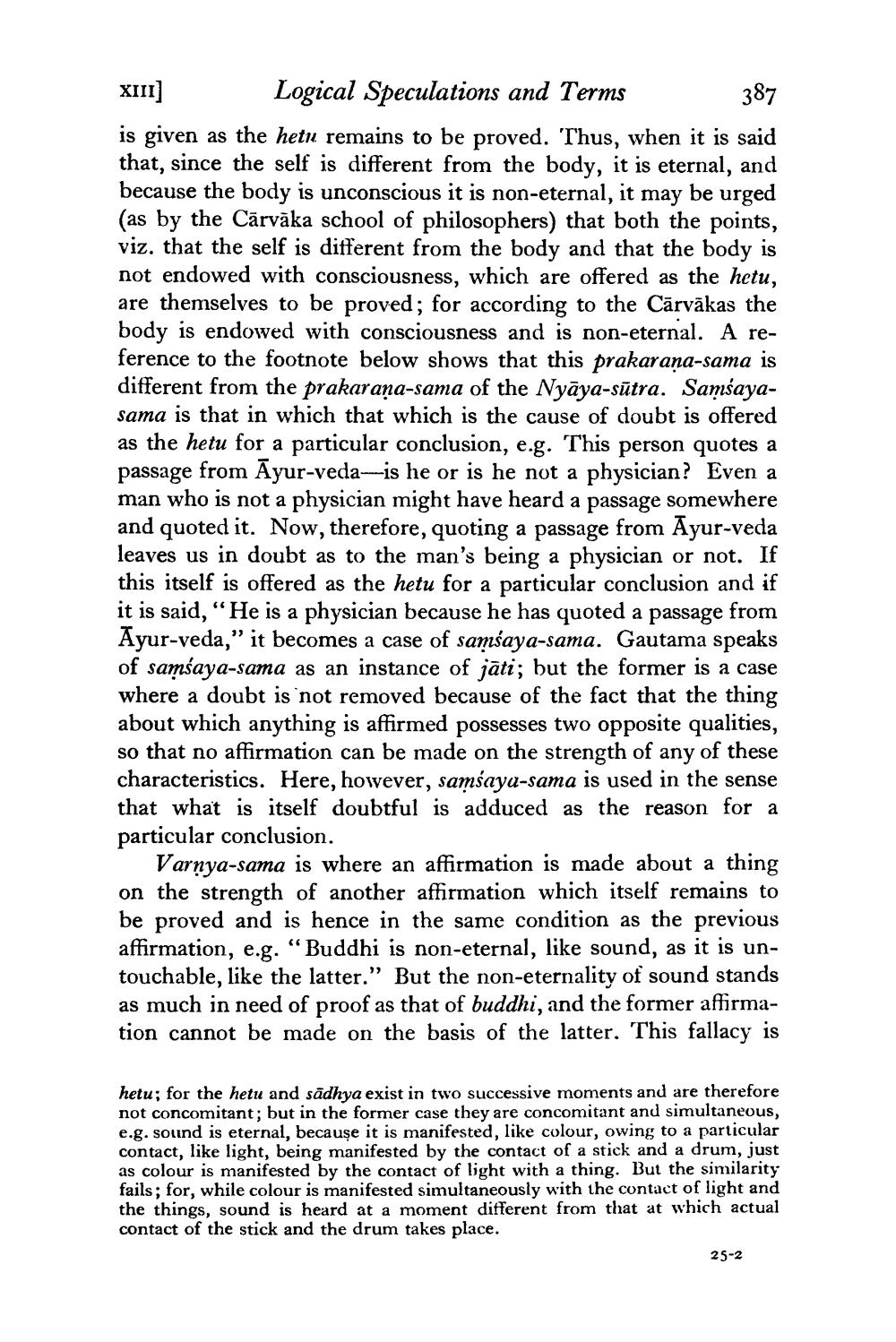________________
XII] Logical Speculations and Terms
387 is given as the hetu remains to be proved. Thus, when it is said that, since the self is different from the body, it is eternal, and because the body is unconscious it is non-eternal, it may be urged (as by the Cārvāka school of philosophers) that both the points, viz, that the self is different from the body and that the body is not endowed with consciousness, which are offered as the hetu, are themselves to be proved; for according to the Cārvākas the body is endowed with consciousness and is non-eternal. A reference to the footnote below shows that this prakaraṇa-sama is different from the prakaraṇa-sama of the Nyāya-sūtra. Samsayasama is that in which that which is the cause of doubt is offered as the hetu for a particular conclusion, e.g. This person quotes a passage from Ayur-veda-is he or is he not a physician? Even a man who is not a physician might have heard a passage somewhere and quoted it. Now, therefore, quoting a passage from Ayur-veda leaves us in doubt as to the man's being a physician or not. If this itself is offered as the hetu for a particular conclusion and if it is said, “He is a physician because he has quoted a passage from Ayur-veda," it becomes a case of samsaya-sama. Gautama speaks of samsaya-sama as an instance of jāti; but the former is a case where a doubt is not removed because of the fact that the thing about which anything is affirmed possesses two opposite qualities, so that no affirmation can be made on the strength of any of these characteristics. Here, however, samsaya-sama is used in the sense that what is itself doubtful is adduced as the reason for a particular conclusion.
Varnya-sama is where an affirmation is made about a thing on the strength of another affirmation which itself remains to be proved and is hence in the same condition as the previous affirmation, e.g. “Buddhi is non-eternal, like sound, as it is untouchable, like the latter." But the non-eternality of sound stands as much in need of proof as that of buddhi, and the former affirmation cannot be made on the basis of the latter. This fallacy is
hetu; for the hetu and sādhya exist in two successive moments and are therefore not concomitant; but in the former case they are concomitant and simultaneous, e.g. sound is eternal, because it is manifested, like colour, owing to a particular contact, like light, being manifested by the contact of a stick and a drum, just as colour is manifested by the contact of light with a thing. But the similarity fails; for, while colour is manifested simultaneously with the contact of light and the things, sound is heard at a moment different from that at which actual contact of the stick and the drum takes place.
25-2




